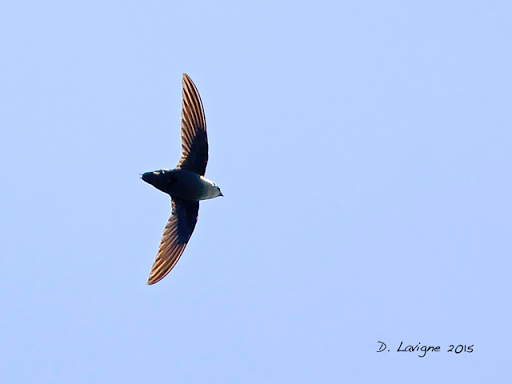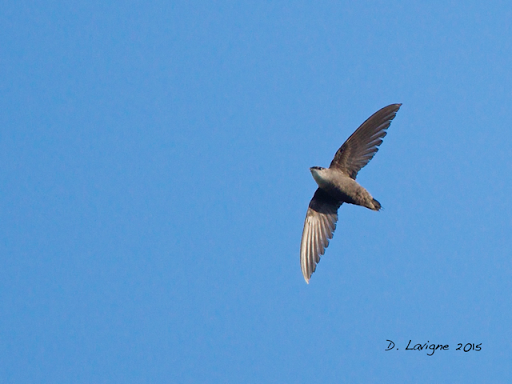All birds replace worn and damaged feathers through the annual moulting process. For chimney swifts in Manitoba, the summer moult overlaps with breeding activities. Feather replacement is an energy consuming affair for all birds, but it further taxes breeding swifts.
For general information, Steve Howell (Peterson Reference Guide to Molt in North American Birds; 2010) has an interesting chapter on moulting in various species of the swift family (Apodidae). For detailed technical information, Peter Pyle wrote the bible on plumage and moult characteristics which enables ageing/sexing of birds (Identification Guide to North American Birds. Part 1. Slate Creek Press, Bolinas, California; 1997). Chimney swifts are a challenge to study – they are fast fliers, both sexes are similar in appearance, and the birds roost/nest in remote locations where we cannot see them. However, we can get glimpses of the birds as they enter/exit chimney sites and dash about feeding.
As obligate aerial insectivores – chimney swifts MUST feed on insect prey collected in the air. It is essential for swifts to remain capable of flying, so they have a gradual, protracted moult. Some birds such as ducks, swans, and grebes, replace their feathers synchronously over a short period e.g., two week period, which renders them flightless.
As chimney swifts have one moult per year they have one definitive adult plumage which is called the “definitive basic”. Birds which have two moults per year e.g., Rose-breasted Grosbeaks, have two definitive plumages per year – the definitive basic (adult winter) and definitive alternate (adult breeding) (http://ofo.ca/site/page/view/articles.plumages). As our monitoring season continues, so does the swift’s moulting.
For monitors in Manitoba, moult characteristics become an important way to distinguish fledglings from adults. Most fledging takes place toward the end of July and into the first week of August, and it is useful to identify juveniles to help estimate nesting success. The flight of newly fledged chimney swifts is characterized by: flying at low altitudes, rapid wing beats for slow air speed, large banking turns, and, occasionally, difficult entries to chimneys (yes, they do miss the opening and tumble down the outside face!). However, within several days post-fledging, young swifts are proficient fliers and they are not easy to distinguish from adults based on flight competency alone. So how do you distinguish juveniles vs. adults? The best way is to look for evidence of moulting on the trailing wing margins. Juveniles will have intact margins while adults will have discontinuities and gaps due to worn and missing feathers.
To illustrate how the trailing wing margin changes over time, Dave Lavigne has once again generously provided very informative photos of adult chimney swifts (see Dave’s new site: http://www.flickr.com/photos/dlavignephotography ).
Many thanks Dave for sharing your images with us all! The trio of photos, taken in Goderich, ON, clearly shows the change in appearance of the trailing wing margins from May through mid-July. For each image, the typical stage of nesting for Manitoba breeding adults, is indicated after the date on which Dave took the photo:



If you start watching the swift’s trailing wing margins, you will be ready to identify and greet newly fledged juveniles in a couple of weeks. Enjoy the challenge!
